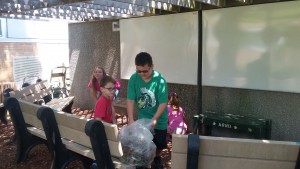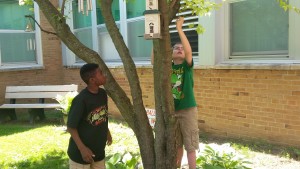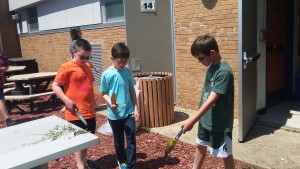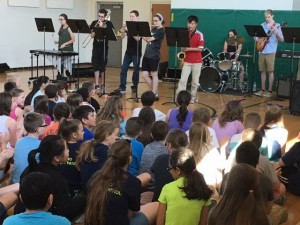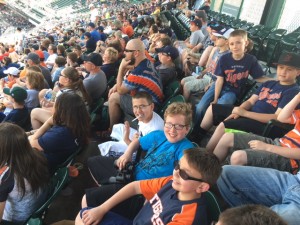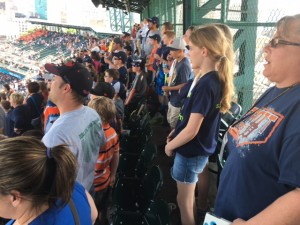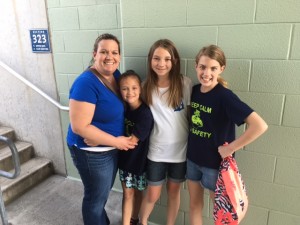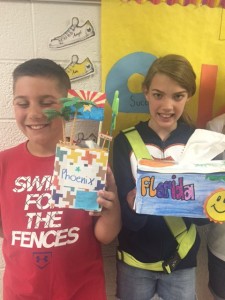Coming soon to Arno…
May 31
K DRA Day
Middle School Band tour 9:30 Grades 4 and 5
June 1
IEP Meetings- Sbonek
Field Day P.M. per schedule
June 2
Field Day full day per schedule
Principal Meeting 9:00
June 3
Third Grade Metro Parks Presentation
Arno Vision
Arno Elementary will provide a system of support to empower and inspire students
to become collaborative learners that strive for academic excellence
Coming up…
Building a common schedule on June 6
Class lists on June 14th (they must be complete prior)

Class of 2016–District Building Parade
On Friday, June 3rd, we will initiate a new APPS tradition–a memory walk for our graduating high school seniors. They will first report to the middle school and then proceed to the elementary they attended around 1:30, in full ceremonial attire. The idea is similar to the clapping parade of 5th graders we have on their last day, so we will have them enter through the K doors and wind up through the 5th grade doors. Please have your classes ready to pop out in the hallway around that time, I’ll update. Once they have departed the area, please return to your classrooms.

Summer Reading Program called Whooo’s Learning will be kicking off by June 1. In summary this is what you need to do:
1. Watch the student tutorial video with your class before June 1st.
https://www.youtube.com/watch?
2. Go to the link below and click on Summer Reading folder.
https://drive.google.com/
3. Copy and distribute your designated student logins (organized by teacher).
4. Copy and distribute the parent instructions PDF. (You may want to combine both documents to just have one 2-sided flyer to send home. These PDFs are also below.
The videos and passwords for your use are in the Arno news folder, where you find daily announcements- you will see a summer reading folder in there.
Happy Reading!
summer reading
Parent videos
Mary Howard Week 4
Please take a few minutes and read an excerpt from Mary Howard’s book on RtI. Its discusses critical issues that must be in place to be successful with kids. Todd and Beth have now joined the RtI team for next year, let me know soon if you are interested.
An effective RTI literacy framework meets the following criteria.
• It maintains a healthy balance between explicit skill instruction, guided practice, and independent application. The RTI framework Chapter 1 The Paths Leading to the RTI Crossroads / 15 The intent of RTI is to ensure that students receive rich literacy experiences every year in every setting with every teacher, not merely in some years in some settings with some teachers. Howard supports varied instructional practices that reflect the gradual release of responsibility (Pearson and Gallagher 1983). Learning occurs through teacher modeling, shared and guided instructional support, and independent practice. Explicit instruction allows teachers to intentionally demonstrate important reading skills and strategies to build a solid foundation. Teachers can than offer a diminishing system of support with shared or guided reading as students apply and practice these skills and gradually transfer their learning to independent use. Independent application is the end goal.
• RTI casts differentiation as integral. RTI makes the classroom teacher the primary provider of thoughtful and well-planned intervention. This is impossible if the predominant form of instruction is whole group. RTI must include flexible grouping that allows teachers to target instructional needs and adjust instruction within and beyond the general curriculum. This includes a wide variety of homogeneous and heterogeneous small-group experiences, such as carefully organized day-to-day guided reading, student conferences, and side-by-side activities. Teachers will need professional development support to effectively orchestrate the varied experiences that avoid a one-size-fits-all mentality. Perhaps the very reason so many children struggle initially is this all-encompassing approach to instruction, where the core reading text is often too difficult.
• It embeds learning in a wide range of authentic literacy experiences. Instruction includes teacher-directed, teacher-supported, and independent activities, such as teacher read-aloud, shared and guided reading, independent reading, and peer collaboration. Learning experiences revolve around meaningful, high-interest resources and active student participation rather than passive learning and trivial paper-and-pencil tasks such as worksheets. Rich learning places students at the center, reading authentically and discussing real books. These experiences illustrate the view that reading is relevant and pleasurable and imparts this message to students.
• It emphasizes quality talk through daily sustained discussions. Teacherand peer-supported discussion revolves around interesting resources that promote high-level thinking. Good teachers use these collaborations as rich springboards to thinking. They value teacher-supported whole-group, smallgroup, and peer activities that make talk central. Unfortunately, the increasing demands that come with teaching to the test have led teachers to abandon effective activities like small-group literature circles in favor of whole-group directed discussions. The stories in basal programs are emphasized, while more authentic and engaging material that promotes higher thinking is ignored. Worse, teachers are often told what questions to ask, discouraging the natural dialogue that arises during authentic discussions.
• RTI emphasizes the thinking process behind successful comprehension. Good teachers purposefully build strategic knowledge into their literature and writing lessons and reinforce a range of effective meaning-making strategies such as using semantic, structural, and visual cues to figure out text challenges; reading between the lines; using phonetic clues to figure out tricky words; or calling on one’s prior knowledge. They focus on understanding by using every opportunity to promote active reading through thinkalouds and other demonstrations; and teacher-supported, peer-supported, and independent learning. They capitalize on the reading-writing connection, engaging students in writing short, simple texts that students can then use to practice reading. They purposefully reinforce knowledge or reteach to bring about understanding.
• It is rooted in an environment that reinforces and extends learning. Students actively participate in a range of meaningful experiences, independently or with peers, that reinforce and extend learning. Management systems exist not to control students, but rather to promote independent engagement in meaningful literacy that continues even when teachers leave the room or meet with a small group of students. Fluency work promotes meaning and builds deeper levels of understanding rather than focusing on speed. Activities that emphasize meaning and celebrate repeated reading, such as readers theater, dramatic reading, and peer sharing, are valued, and blocks of time are dedicated each day for these critical experiences.
• It gives students a prominent role in their own learning. Effective teachers know that learning cannot be about mastery if it remains a mystery. They have high expectations and make these expectations clear as students become co-collaborators. They engage students in generating essential learning goals and rubrics, charts, and other ongoing references to guide reflective conversations. They view student conferences as opportunities to reflect on past and current goals or establish new directions. Effective teachers encourage students to use peer- and self-assessment to celebrate successes and set new goals. They illuminate learning through explanations and carefully planned activities rather than label it with happy faces and red marks. They spend time demonstrating skills and providing support as children acquire new learning through ongoing feedback and guidance.
• It supports the reality that motivation and learning are inseparable. Effective teachers refuse to buy into the misconception that independent reading of self-selected texts is a poor use of time. They enrich these experiences with guidance and feedback and recognize the value of reading easy, interesting texts over dull grade-level ones. They believe a classroom library is essential to a well-balanced learning environment, and teach students how Chapter 1 The Paths Leading to the RTI Crossroads to access it on their own. They celebrate reading workshop as a way to encourage independent reading, confer with students, and offer immediate feedback. They recognize that the potential for learning increases the more students are motivated to learn, and they create an environment to nurture this motivation.
• It emphasizes resources at appropriate levels of challenge. Students are not subjected to texts and tasks that are frustrating; instructional support and scaffolds are in place to ensure that every experience is pleasurable and meaningful. Massive numbers of interesting narrative and expository texts are available. Instructional activities revolve around slightly challenging enrichment texts and teacher-supported learning, reinforced by texts students can read independently. Teachers don’t give grade-level texts to students who are reading below grade level; they use supplementary resources that acknowledge context, instructional setting, and level of support as essential considerations. In short, teachers ensure that every student has books that they can—and want to—read. Successful reading experiences are paramount.
Court Yard Cleanup
A big thanks to Mrs. Solak’s Class for cleaning up the Arno courtyard! We appreciate you helping make our school beautiful!
High School Jazz Band Visit
We recently had a visit from the high school jazz band that rocked the gym with some great music! Our 4th and 5th graders were treated to an awesome start to their day and we loved seeing some of our former Arno kids!
Detroit Tiger Safety Outing
Color Run Forms Due Friday!
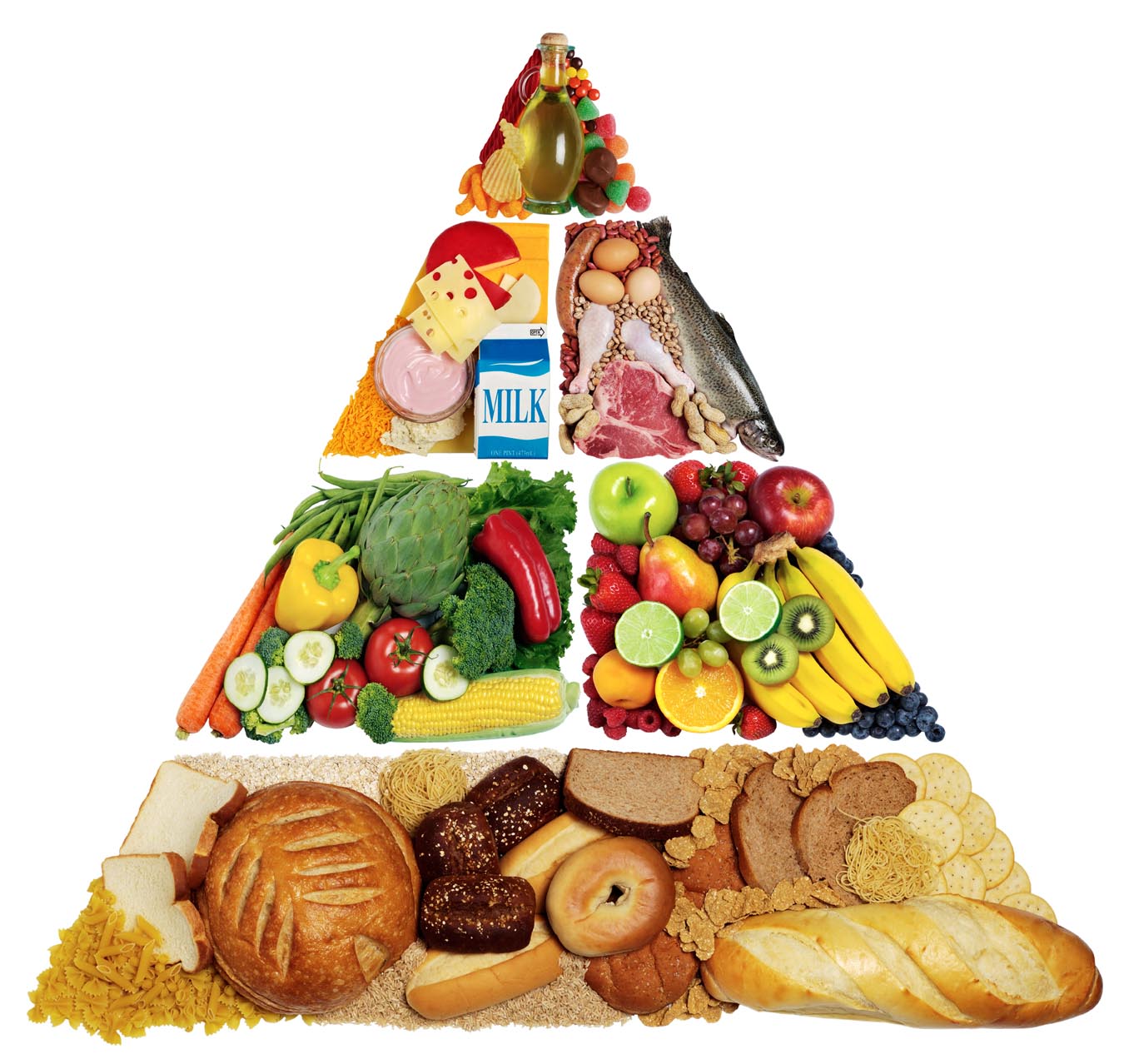
New Food Service System
We are pleased to announce a new Food Service system,MyPaymentsPlus, that will show up-to-date meal balances and will also allow you to make online payments directly to your child’s meal account!
In order to view your child’s meal balance and/or make online payments, parents will need to create a free account at: www.MyPaymentsPlus.com A link to the site is on the Food Service page of the district website – http://apps.k12.mi.us/about-us/food-services/, and also available through the Allen Park Public Schools Mobile App (Search: Allen Park Schools). Once you’ve created an account online, you may wish to download the free mobile app (Search: MyPaymentsPlus)
Setting up an account is an easy one-time registration. You will need your child’s student ID number, which is located in your ParentConnection under the Demographics tab.
Additional information, including program features and free mobile app, is included in the flyers attached.
We hope our families enjoy this new convenience and look forward to a successful program launch!
Thank you
4th Grade State Reports
Mrs. Smalley’s students proudly display their state reports



